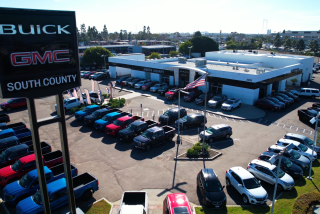Car Quotas Are Ending but Test Is Yet to Come
When President Reagan announced that he wouldnât ask the Japanese car makers to extend their voluntary quotas on exports to the United States, a skeptical headline might have read: âVoluntary Quotas to End, to Be Replaced by Voluntary Quotas.â
Analysts have been speculating for weeks about how the Japanese companies, their competitive juices tightly bottled for nearly four years, would react to such a move by the Reagan Administration. The consensus was that they would continue to exercise considerable restraint.
Stories from Japan since the announcement reinforce that view, predicting that if the producers donât volunteer on their own to limit export growth, the Japanese government will likely âvolunteerâ for them.
That may be reassuring to many in the U.S. auto industry who faced the import challenge in pre-quota days and came up short of jobs and corporate profits. But it is certainly not good news for many American consumers, for whom car prices have gone out of reach. In effect, new-car buyers have paid a tax of perhaps $1,000 or more in the form of higher prices to give the U.S. industry a respite from competition.
Moreover, with the Japanese concentrating on fully loaded, top-of-the-line cars to maximize profits on what they were permitted to sell here, quotas have been especially tough on those buyers looking for cheaper models.
Some measure of common sense in approaching the U.S. market obviously is warranted in Japan, but the risk is that policy there will perpetuate the anti-competitive distortions in the American car market.
Transition Period
Itâs important to remember that permanent protection of the American auto industry was not the purpose of pressuring Japan into quotas. The program was supposed to provide a transition period, permitting the industry to get back on its feet and into a stronger competitive posture.
By one measure, the industry has made the most of the time. Profits are at record levels, and they got there on less than record sales. Operations have been streamlined, overhead has been reduced.
But the most crucial measure is how competitive domestic manufacturers have made their products in terms of American consumer preference. Without a full complement of Japanese cars in U.S. showrooms, that really canât be determined. The longer the Japanese are restrained, the longer this key test is delayed.
The Classic Risk
That is the classic risk in protectionism. While protection saves jobs now, it so insulates an industry from competition that it may lose touch with competitive reality. Comes the day of reckoning, and suddenly itâs more than just some jobs that disappear.
Hence, itâs important, despite the immediate pain that it may cause, for true competition to return to the auto business. No longer should dealers be able to blatantly add $1,000 or more to an already inflated sticker price and force buyers to take it or leave it. Or for the only cars available to be those the U.S. and Japanese producers want to push.
Why would the Japanese want to continue restraints? For one thing, having suffered one round of U.S. protectionism, theyâd like to avoid another. Equally important, theyâd like to avoid any additional pressures from the United States to open more of their own markets.
Beyond that, itâs just possible that the major Japanese companies have become comfortable with what amounted to a license to operate as a cartel, with the ability to slice up the U.S. market. A true end to quotas will make them work harder, too.
Ironically, it may be the most outspoken supporter of quotas who will lead the drive to do them in. Chrysler Corp. Chairman Lee A. Iacocca, the nearest thing this country has had to a business hero in recent times, has said that with the program over, heâll triple imports from his Japanese partner, Mitsubishi. Add that to General Motors Corp.âs expanded import plans, and the rest of the Japanese industry can hardly remain restrained.






